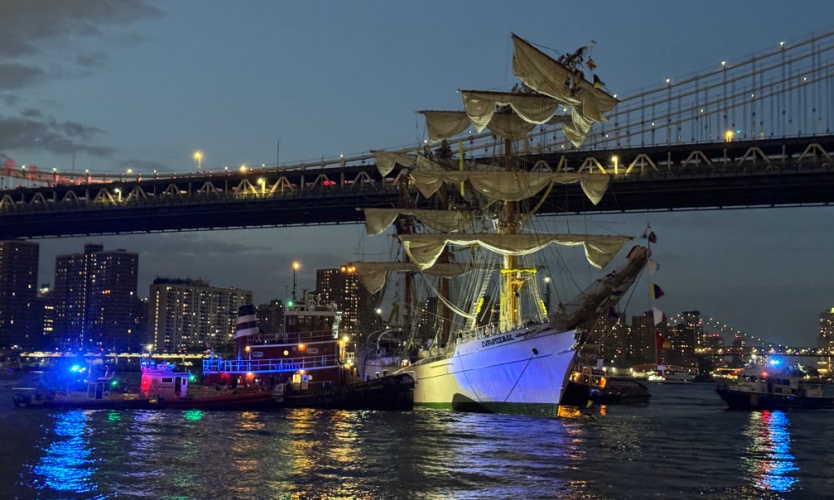Bridge crashes put focus on marine risk management
- July 12, 2025
- Posted by: Web workers
- Category: Workers Comp

Recent shipping accidents, including the May 17 crash of a Mexican Navy tall ship into New York’s Brooklyn Bridge, underscore the need for better marine risk assessments and contingency plans, experts say.
Two cadets died, and at least 19 crew members were injured after the Cuauhtémoc training ship struck the bridge. Some reports said the collision occurred after the ship lost power.
According to initial reports from the National Transportation Safety Board, no structural damage was done to the bridge.
The incident followed the collapse of Baltimore’s Francis Scott Key Bridge last year after it was struck by the container ship Dali. The accident left six construction workers dead and caused significant port disruption.
Accidents, or allisions, in which vessels strike a stationary object such as a bridge or a dock, happen quite frequently, but severe incidents are rare, said Rahul Khanna, New York-based global head of marine risk consulting at Allianz Commercial.
In its annual safety and shipping review, released Tuesday, Allianz Commercial noted that only 35 significant bridge collapses involving ships or barges occurred between 1960 and 2015.
However, damage ranging from significant to minor is more common, with more than 1,800 reported incidents involving vessels and port infrastructure since 2015, making it the fifth most frequent cause among more than 28,000 reported shipping incidents, according to the report.
Various factors, such as weather, equipment failure, power outages, or crew errors, can cause allisions. Depending on the extent of damage, multiple marine insurance policies, including protection and indemnity liability, hull and machinery, and cargo policies, may respond, in addition to property and other policies.
Rick Geiger, New York-based U.S. & Canada marine industry practice leader at Marsh LLC, said the value of ships and port infrastructure has increased significantly, resulting in more costly claims.
“They’re much more advanced technologically, and therefore they have much more value associated with them in instances where they are damaged,” Mr. Geiger said.
Advanced equipment parts are often sourced from different parts of the world, adding to the cost and complexity of repairs, he said.
Consequential losses, such as income losses for ports and terminals, can also be substantial. Specialty policies, including trade disruption or port blockage policies, can provide coverage for businesses that don’t suffer direct physical damage but are affected because their goods or a ship cannot reach them, he said.
From a liability perspective, when a ship strikes a stationary object, the presumption is that the moving vessel is generally responsible, said Jana Byron, Houston-based senior vice president and marine practice leader at Lockton Cos. LLC.
“The presumption is that the vessel has the ability to move, and so the vessel should stay out of the way of the bridge,” she said.
The determination may be different if the stationary object, such as a gantry crane, is in an unauthorized location. “It has to be on a case-by-case basis,” Ms. Byron said.
Claims can be costly, even with minor incidents.
“You’d be amazed how much a lighthouse, or hitting a buoy, which you would think would not be a big deal, can be half a million dollars,” Ms. Byron said.
Mr. Khanna said recent incidents underscore the need for comprehensive risk assessments for any vessel that could potentially come into contact with critical infrastructure in waterways.
Responsibility should not rest solely on ships and their crews but also on ports and authorities that control the infrastructure, he said. “We need to enforce our risk assessment requirements and tighten our requirements on vessels visiting ports,” he said.



